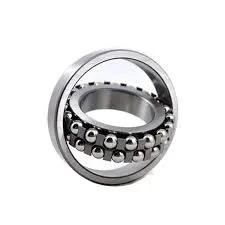
Rhag . 12, 2024 21:48 Back to list
miniature angular contact bearings
Miniature Angular Contact Bearings An Overview
In the realm of precision engineering, miniature angular contact bearings play a vital role in enhancing the performance and reliability of various mechanical systems. These specially designed bearings are engineered to accommodate high-speed applications and support both axial and radial loads simultaneously. This article delves into the intricacies of miniature angular contact bearings, their design features, applications, and advantages.
Understanding Miniature Angular Contact Bearings
Miniature angular contact bearings are a type of rolling-element bearing characterized by the arrangement of the inner and outer raceways at an angle to the shaft axis. This unique design allows for the efficient handling of combined loads—where axial loads can be applied in one direction while simultaneously supporting radial loads. The term “miniature” refers to their small dimensions, usually ranging from a few millimeters up to about 80 mm in outer diameter, making them suitable for compact machinery and devices.
These bearings are typically constructed from high-quality materials such as stainless steel or ceramic, ensuring durability and resistance to wear. The internal geometry of these bearings is optimized for minimal friction and maximum load-bearing capacity, featuring precision-ground raceways and balls to achieve high performance even at elevated speeds.
Design Features
The angular contact design allows for a specific angle of contact between the balls and the raceways, termed the contact angle. This angle significantly affects the bearing’s load capacity and its ability to withstand axial forces. Miniature angular contact bearings can come in various configurations, such as 15°, 25°, or 40° contact angles, allowing engineers to choose the right bearing based on application requirements.
Additionally, these bearings can be designed to accommodate either single row or double row configurations. A single-row angular contact bearing is typically used for applications requiring one-directional load capacities, while double-row variants can support loads from two directions, enhancing stability and performance in more complex applications.
Applications
The applications of miniature angular contact bearings span across diverse industries, including
1. Precision Instruments In devices such as optical equipment and measuring tools, the small size and accurate performance of these bearings are critical.
2. Robotics Miniature angular contact bearings are essential in robotics for joint articulation, where consistent and precise movements are required.
miniature angular contact bearings

3. Aerospace These bearings are employed in various aerospace applications due to their lightweight and robust nature, which is paramount in aircraft and spacecraft systems.
5. Electric Motors Many small electric motors rely on miniature angular contact bearings to manage the rotational forces and maintain the alignment of the rotor, thereby improving efficiency and reducing noise.
Advantages
The use of miniature angular contact bearings brings several key advantages
- Space Efficiency Their compact size enables the design of smaller machines without compromising performance, which is crucial in modern engineering.
- High Load Capacity Their ability to handle combined loads makes them ideal for applications where space and weight are limited, yet robust performance is necessary.
- Precision Performance With their precision engineering, these bearings provide low levels of friction and high-speed capability, enhancing the efficiency of machines.
- Durability Constructed from high-grade materials, miniature angular contact bearings exhibit excellent wear resistance, leading to longer service life and reduced maintenance costs.
Conclusion
Miniature angular contact bearings are an indispensable component in the modern engineering landscape. Their unique design allows for the effective support of combined loads in compact, high-speed applications. As technology continues to evolve, the demand for these precision components is expected to grow, making them a pivotal element in the advancement of machinery across various industries. Engineers and designers can leverage the capabilities of miniature angular contact bearings to create innovative, efficient, and reliable systems that meet the demands of today's fast-paced technological environment.
Latest news
-
Premium Deep Groove Ball Bearings | High Speed & Reliability
NewsAug.29,2025
-
Durable Scaffolding Clamps - Secure & Reliable Tube Connectors
NewsAug.28,2025
-
Common Failures in Thrust Ball Bearings and Solutions
NewsAug.22,2025
-
How Tapered Roller Bearings Can Take Shock Loads
NewsAug.22,2025
-
Angular Bearings in High-Precision Spindles
NewsAug.22,2025
-
The Impact of Misalignment on Cylindrical Roller Bearing Performance
NewsAug.22,2025
